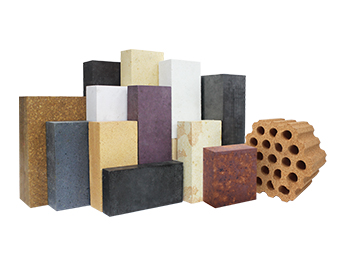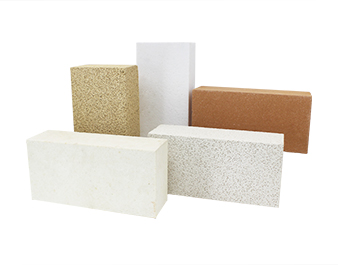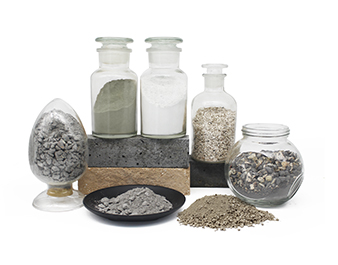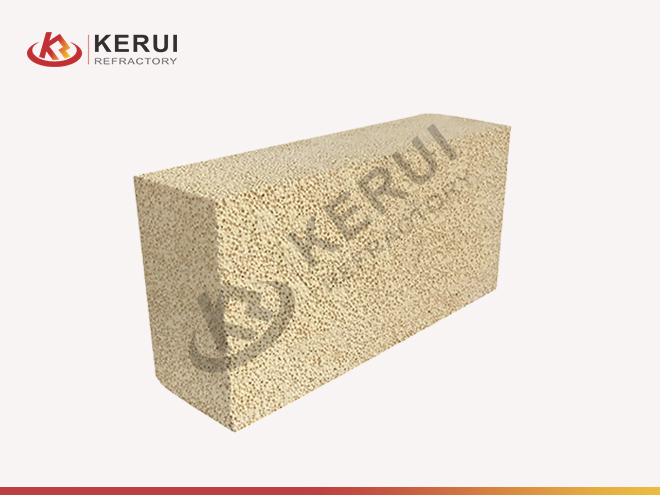
High Alumina Insulation Brick
- Al2O3≥: 48%
- Fe2O3≤: 2.0%
- Bulk Density (g/cm³): 0.5-1.2
- Cold Crushing Strength(MPa)≥: 1.2-4.5
- Standard Size: 230*114*65mm
- Certification: ISO9001/ISO14001/ISO45001/ISO50001
- Sample: testing of sample is available
Description of High Alumina Insulation Brick
High alumina insulation bricks are also called high-alumina lightweight bricks. It is a high-performance insulation material with an Al2O3 content of more than 48%. It is also possible to add a small amount of auxiliary materials such as silica sand and rare earth elements to improve the performance of bricks. The surface contact temperature is not higher than 1400℃.
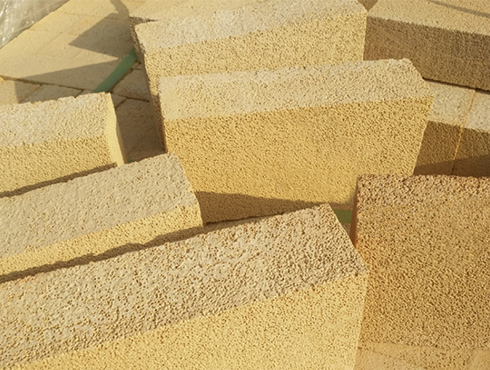
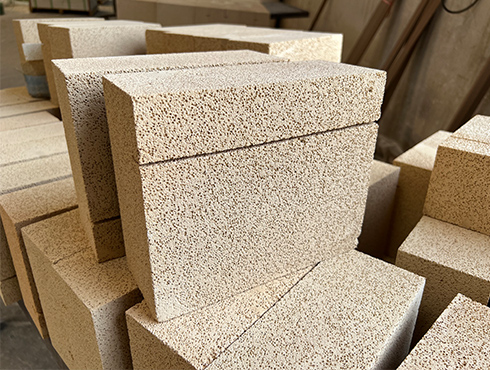
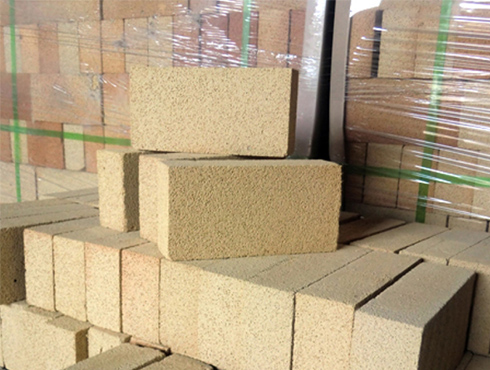
Kerui High Alumina Insulation Brick Technical Data Sheet
| Item/Grade | LG140-1.2 | LG140-1.0 | LG140-0.8L | LG140-0.7L | LG140-0.6L | LG140-0.5L | |
|---|---|---|---|---|---|---|---|
| ω (Al2O3)/% | μ0 ≥ | 48 | |||||
| σ | 1.0 | ||||||
| ω (Fe2O3)/% | μ0 ≤ | 2.0 | |||||
| σ | 0.3 | ||||||
| Bulk Density/(g/cm³) | μ0 ≤ | 1.2 | 1 | 0.8 | 0.7 | 0.6 | 0.5 |
| σ | 0.05 | ||||||
| Cold Crushing Strength/MPa | μ0 ≥ | 4.5 | 3.5 | 2.5 | 2.2 | 1.6 | 1.2 |
| σ | 1.0 | 0.5 | 0.2 | ||||
| Xmin | 4.0 | 3.0 | 2.2 | 2.0 | 1.5 | 1.0 | |
| Permanent Linear Change/% (T/℃*12h) | Test Temperature T/℃ | 1400 | 1350 | 1250 | |||
| Xmin~Xmax | -2~1.0 | ||||||
| Thermal Conductivity Coefficient/[W/(m·K)] ≤ Average Temperature (350±25℃) |
0.55 | 0.50 | 0.35 | 0.30 | 0.25 | 0.20 | |
Advantages of High Alumina Insulation Brick
Excellent Insulation Properties
High alumina insulation bricks have excellent insulation properties, and they can completely isolate heat conduction. This advantage shows that high alumina bricks can maintain internal stability under high temperature conditions, not only keep the heat to escape but also provide a strong thermal insulation effect. This insulation makes high alumina insulation.
Lightweight Material
The high alumina insulation brick is light in material and has gaps inside middle. This feature makes it more convenient to install and carry, reduces labor costs, and reduces the difficulty of construction. In addition, the lightweight feature also reduces the weight and load of the kiln, allowing for a more flexible design.
Thermal Shock Resistance
The excellent thermal shock resistance of high alumina insulation bricks enables them to withstand the heat shock of rejection. Whether it is a sudden increase or decrease in temperature, high alumina insulation bricks can maintain their own integrity without cracking and damage. This excellent performance makes it very suitable for industrial furnaces in high temperature environments, etc.
Corrosion Resistance
The corrosion resistance of high alumina insulation bricks is mainly affected by chemical composition and microstructure because its alumina content is usually above 50%. Alumina has strong corrosion resistance and can resist the erosion of most acid-base corrosive media, so high-alumina insulation bricks have certain corrosion resistance.
Manufacturing Process of High Alumina Insulation Brick
Prepare Raw Materials
Prepare a certain amount of high alumina bauxite and composite refractory clay containing Al2O3 as raw materials, and add additives. Such as silica fume, kaolin, aluminum silicate, etc. These additives can improve the fire resistance, stability, and thermal stability of bricks.
Molding
Grind and mix the above prepared raw materials, and put the mixed material into the mold, and shape it by pressing. At the same time, a certain amount of wet binder can be added to improve the plasticity of the brick, which can make the powder particles have a strong binding force during the molding process.
Drying
Drying is putting the formed bricks neatly in the drying equipment or kiln to remove excess moisture in the bricks. The drying process often goes through several stages, the first is initial drying, usually at a lower temperature, which can drain the moisture on the brick surface, just by natural wind. Afterward, heating and drying, as the temperature of the equipment gradually increases, promotes the evaporation of moisture inside the brick body but avoids excessive drying and damage to the rotation body. After the drying time, the device can be used to detect whether it is completely dry.
Sintering
The dried bricks are heated and calcined in a high-temperature kiln. The temperature is 1300℃. During the sintering process, the alumina in the raw materials begins to melt and react with other components. Particles bond stronger to form a complete and compact brick.
Cooling
Cooling is the last step in the production process of high alumina insulation bricks. After the calcination is completed, the temperature of the bricks is gradually lowered to room temperature.
Application of High Alumina Insulation Brick
Glass Industry
High alumina insulation bricks are often used in glass furnace linings, glass quenching linings, glass melting furnace linings, glass crucibles, etc. They can provide excellent fire resistance, heat preservation, and slag resistance, ensuring glass production Process stability, efficiency, and quality.
Ceramic Industry
High alumina insulation bricks usually used in the lining of the ceramic kiln, the lining of ceramic drying furnaces, the lining of sintering furnaces, and the application of high alumina insulation brick can provide thermal insulation performance and thermal insulation effect.
Iron and Steel Industry
High alumina insulation bricks usually used in blast furnace lining, hot blast stove lining, ladle lining, furnace roof, etc., which can improve the safety of the working environment and improve production efficiency.
Petrochemical Industry
High alumina insulation bricks often used in gas furnace equipment, furnace lining, heat exchange equipment, etc. High alumina insulation bricks can prolong the life of petrochemical equipment and keep the temperature stable.

